|
Interviews
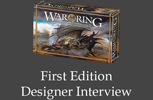
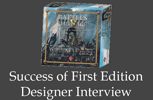
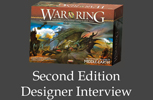
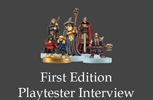
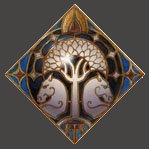
First Edition Designer Interview
On the twentieth of May 2004 I asked Francesco Nepitello, one of the designers (together with Marco Maggi and Roberto Di Meglio) of War of the Ring, to answer some questions about how this great game came into being.
He was in the middle of putting the final touches to the design but gladly agreed to answer (with the aid of his co-designers) any of my questions when an opening made it possible in his busy schedule.
On to the interview...
Kristofer: When and why did the idea to make a War of the Ring game take form?
Francesco: We've been fans of the book for ever, and dedicated gamers. The two things
combined naturally some years ago, when I, Marco and Roberto started
pondering about the viability of a wargame playable in a relatively short
time that could capture the 'feel' of the book. The recent diffusion of
'card-driven' games seemed to indicate a way, and we decided to try.
Kristofer: How long did it take to come up with the initial design (The dice,
the way the Fellowship moved etc.)?
Francesco: We've been very lucky. Almost everything that's in the box was in the first
proposal, and most concepts came together very very early. Probably that's
due to our almost life-long passion with the books.
Kristofer: Can you please describe in as much detail as possible how you came up
with the idea behind the Fellowship's movement system?
Francesco: The idea came during the first 'real' brainstorming session. The idea was
to give the impression that the Fellowship's movement was hidden to
everybody, even the Free People player himself! If you know how it works, you
know that the mechanism can be described in this way, since the precise
location of the Fellowship is going to be certain (chosen) only when
revealed/declared, so they can be anywhere within a certain range.
Roberto: While most of the mechanics are a direct inheritance of the first
prototype, the Fellowship movement initially was conceived under a more
traditional 'hidden' approach, something we were not very happy with for
the lack of originality we were showing. When the idea of the "out of the
board" movement came up, it was immediately enthusiastically embraced and
used in the first playtest session. After that playtest session, we also
decided that we wanted to have unique mechanics to represent the difficult
struggle of the Ringbearers inside Mordor. Initially the mechanics inside
and outside Mordor were completely different; in the end we managed to make
them very similar while at the same time still keeping the same feeling.
Kristofer: Can you please describe in as much detail as possible how you came up
with the idea behind the action dice system?
Francesco: We all tinkered with card-driven games mechanics first, and then action dice
seemed to be a good way to limit/randomize the resources of the players. Me and
Marco were already familiar with iconic dice restricting/indicating your
movement choices (our game X-bugs has 'action dice') but Roberto was the
one to offer the option, and we of course loved it immediately.
Kristofer: How much inspiration/ideas did the old SPI 'War of the Ring' game provide?
Francesco: Being familiar with the game (we all played and loved/hated it passionately
many years ago) we decided to shy away from it as we could, to avoid any
parallels (out of respect, naturally). As previous 'literature', it was a
precedent to be considered, of course, and its existence certainly
indicated us which way to go (or not to) in many instances.
Kristofer: Developing the combat system, did you try many different approaches
and if so can you give some examples of some versions you opted not to use?
Francesco: Well, not exactly. As you know, our combat system is fairly
straightforward. It was more a matter of balancing it and streamlining it
for a smoother result. We went immediately for a system that could allow
for a great number of individual battles to be fought, without them needing
multiple evenings to complete. We think that the use of Leaders, Companions/Minions
and Combat cards make for exciting and diversified results, without the
need for charts, multiple unit stats and so on.
Roberto: The single element of the Combat System over which we struggled the most to
find a good solution is the Siege system.
We know from the beginning this would have to be kept simple, consistent
with the rest, and without the need for a long attrition-like mechanism as
such battles in LOTR are a matter of days and not months. I believe that
the current system is very nice because it put Elite units in a very
important role in the game, both offensively and defensively.
Kristofer: When creating the Characters (Companions & Minions) did you try to create more
characteristics (Movement, Strength, Leadership etc.) than just what
level and what abilities they had before deciding on the final version?
Francesco: No, actually it is the other way around. Characters spring from the
Fellowship subset of rules, the one that can be considered the more
abstract or 'Euro' , if you want. So, characters came out simple, but were
enriched with details somewhat to satisfy first our need for them to 'come
out' of the game as alive as possible, within our needs for simplicity and
smoothness. Their characteristics, combined with event cards do satisfy our
expectations in play. I hope you will share our opinion.
Kristofer: The idea behind the Cards, that they act as both Combat bonuses and
Events, did this exist from the beginning or did it grow through the creation process?
Francesco: The card decks were three per player, in the beginning (strategy,
character, combat). We actually commissioned the icons for the combat card
backs (now featured in the combat portion of the card), but then decided to
combine them in only 2 decks per player. We're very glad of the final
result, that we feel is very much in line with the card-driven game
philosophy that first inspired us in designing the game (if you choose one
event, you forfeit a good combat effect).
Kristofer: Can you give a short account of when you presented your idea/protype
in order to get the license?
Francesco: I'm not sure I can... I'll leave this to Roberto.
Roberto: After working for a couple of months on an early version of WAR OF THE RING
mostly for my own enjoyment (I had a bad pneumonia and lots of time to
spend, very unusually), I remembered that, to my best knowledge, the
licensee for Tolkien boardgames, Sophisticated Games, was not interested in
a "wargame" about the subject.
The idea for such a game was a subject I casually discussed with Robert
Hyde, Sophisticated Games's director, in the past couple of years, and apparently this was
not something which was considered much.
So, I tried to contact Tolkien Enterprises directly, but to my surprise Tolkien Enterprises
got me in touch with Sophisticated instead. Their license also covered a
game like the one I described. The "surprise" part was because in the
meantime Sophisticated Games had become interested in licensing such a game
- as three other companies (Nexus was the fourth one) had expressed an
interest to do such a game, including some of the best ones on both sides
of the Atlantic Ocean.
We were then asked to prepare a proposal with our project and ideas, which
I did, without much hope but with as much zeal as I could put together:
given the love we had for The Lord of the Rings, we did not want to lose
the chance of being involved in the "ultimate" game translation of the Trilogy.
Apparently both the way we envisioned the game and the game itself were
given instead , beyond our wildest hopes, very high consideration from
Sophisticated Games and we were chosen to sub-license and develop the War
of the Ring.
Kristofer: Thank you very much Francesco and Roberto for taking the time from your busy schedules to answer these questions.
|












|














